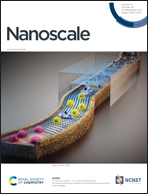Theoretical modeling of structural superlubricity in rotated bilayer graphene, hexagonal boron nitride, molybdenum disulfide, and blue phosphorene
Abstract
The superior lubrication capabilities of two-dimensional crystalline materials such as graphene, hexagonal boron nitride (h-BN), and molybdenum disulfide (MoS2) have been well known for many years. It is generally accepted that structural superlubricity in these materials is due to misalignment of the surfaces in contact, known as incommensurability. In this work, we present a detailed study of structural superlubricity in bilayer graphene, h-BN, MoS2, and the novel material blue phosphorene (b-P) using dispersion-corrected density-functional theory with periodic boundary conditions. Potential energy surfaces for interlayer sliding were computed for the standard (1 × 1) cell and three rotated, Moiré unit cells for each material. The energy barriers to form the rotated structures remain higher than the minimum-energy sliding barriers for the (1 × 1) cells. However, if the rotational barriers can be overcome, nearly barrierless interlayer sliding is observed in the rotated cells for all four materials. This is the first density-functional investigation of friction using rotated, Moiré cells, and the first prediction of structural superlubricty for b-P.



 Please wait while we load your content...
Please wait while we load your content...